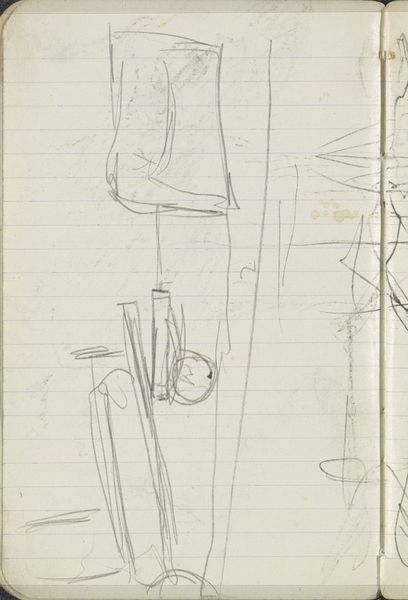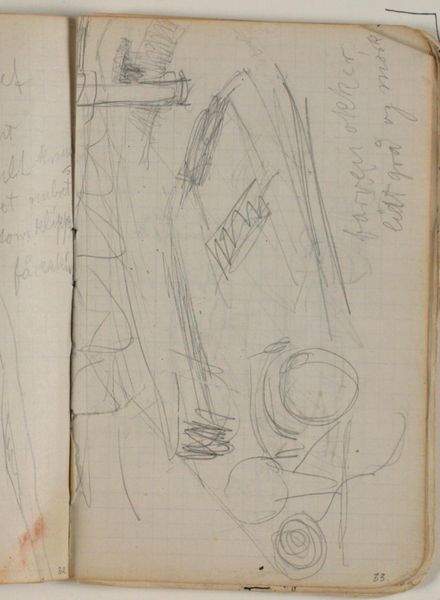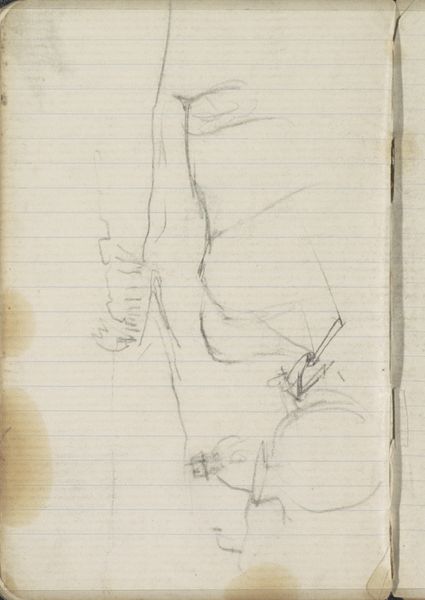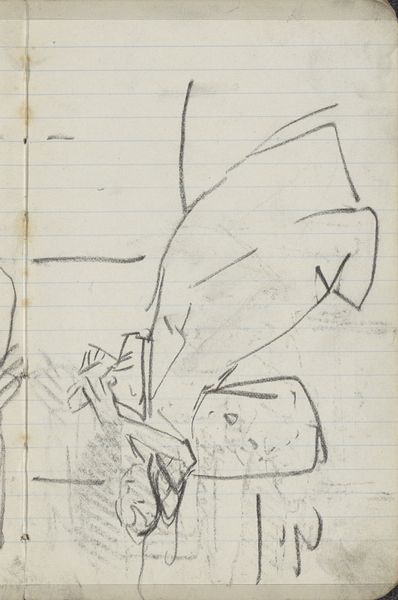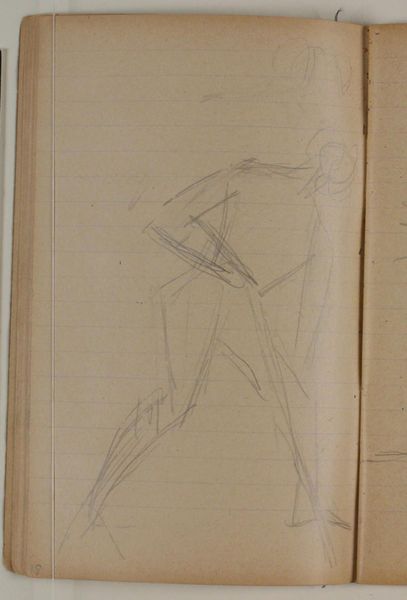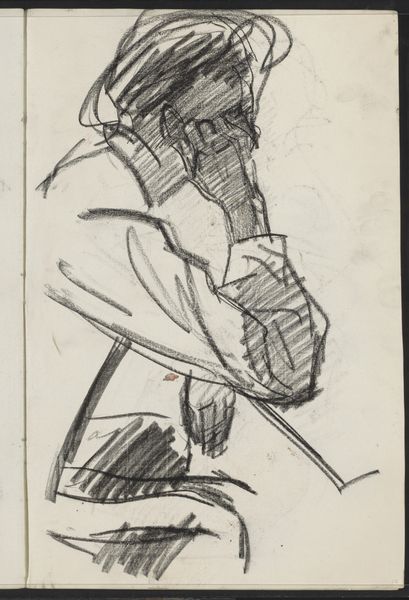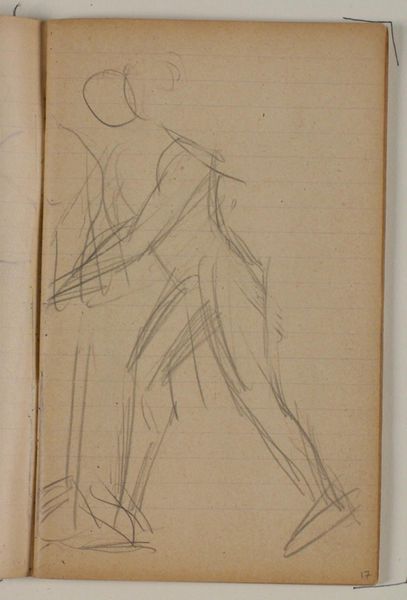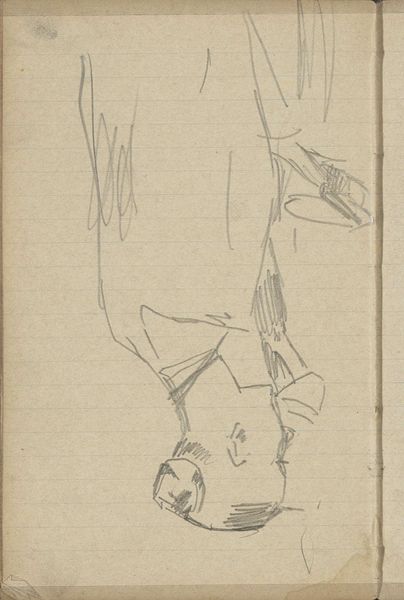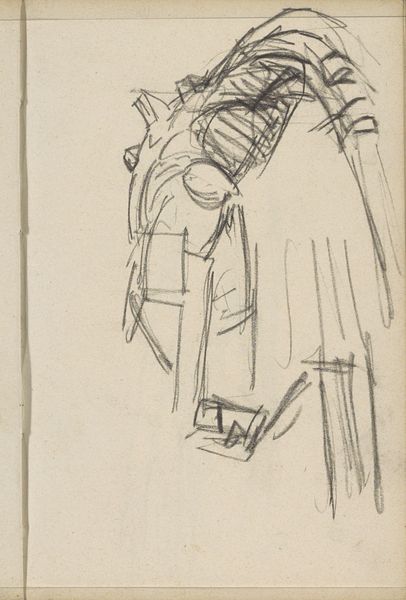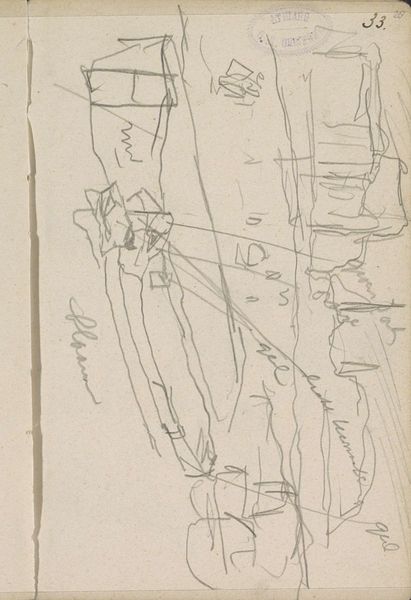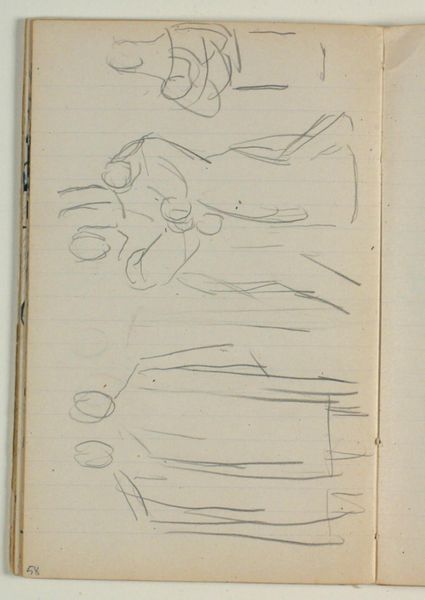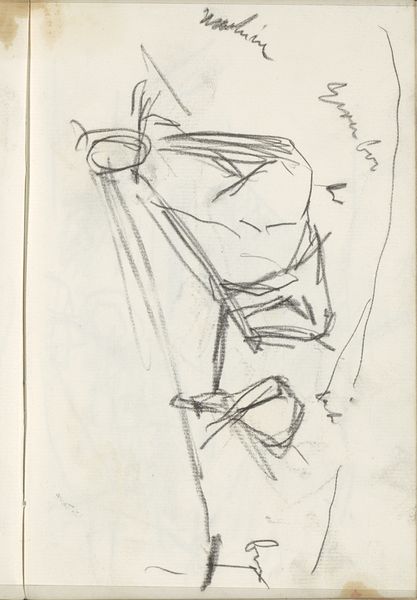
Copyright: Rijks Museum: Open Domain
Editor: Breitner's "Twee Vrouwen," created between 1892 and 1900, is a pencil drawing currently held at the Rijksmuseum. There is an intimate, yet almost distant, quality about the way the figures are rendered. What are your observations on its formal elements? Curator: What strikes me first is the immediacy captured through the economy of line. Note how Breitner uses the ruled lines of the paper itself to structure the composition. These aren’t just figures; they are formal arrangements of lines, shapes, and the negative space they define. How does the texture of the lines impact your interpretation? Editor: It creates a sense of dynamism, even though the subjects themselves seem quite still. It reminds me of the unfinished quality you find in a lot of Impressionist work. Do you think this adds to the reading of intimacy I noticed? Curator: Perhaps, but consider the deliberate choices in line weight and direction. Breitner uses darker, more assertive strokes to define key contours, pulling them forward, while fainter lines suggest recession and shadow. The image becomes not just a record, but an exploration of perception. It's as though Breitner is examining the structural essence of form. Are there other instances you see like that here? Editor: Well, yes. I see how the repeated diagonal lines in the lower right help frame and support the image, while the figures are quite literally deconstructed above. They give the impression of two different states, like process. Curator: Precisely. That duality serves to heighten our awareness of the act of seeing itself, the reduction of form into constituent parts. That element emphasizes his style overall. It goes beyond mere depiction. Editor: That’s fascinating; I hadn’t considered the piece in such structural terms before. Thanks! Curator: My pleasure! It’s a stimulating drawing on multiple levels.
Comments
No comments
Be the first to comment and join the conversation on the ultimate creative platform.
